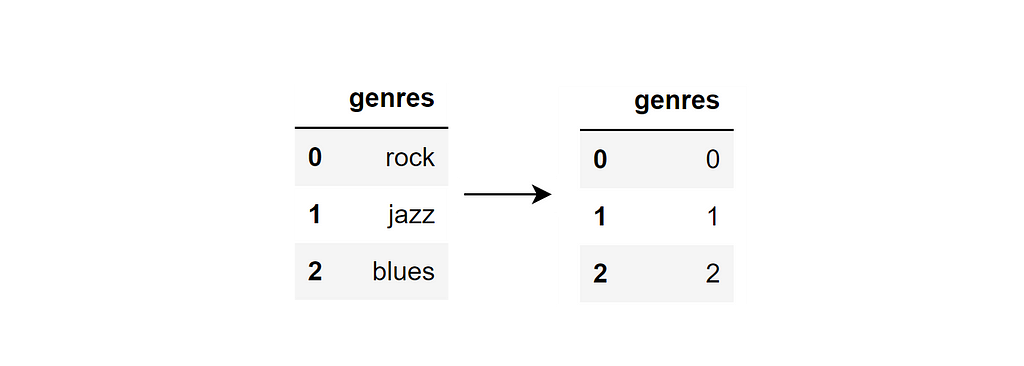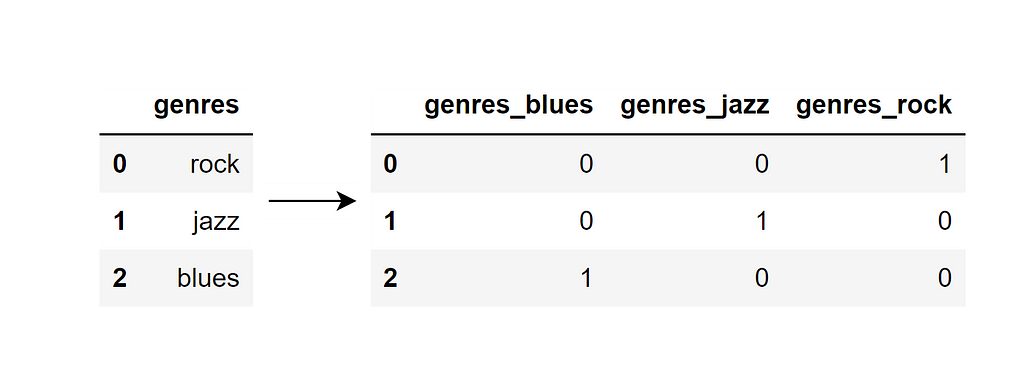
Effective Categorical Variable Encoding for Machine Learning
Last Updated on January 7, 2023 by Editorial Team
Author(s): Filipe Filardi
Originally published on Towards AI the World’s Leading AI and Technology News and Media Company. If you are building an AI-related product or service, we invite you to consider becoming an AI sponsor. At Towards AI, we help scale AI and technology startups. Let us help you unleash your technology to the masses.

A categorical variable is a common type of data found in many machine learning datasets. Effective handling of categorical variables can be crucial for building successful models since it contains rich information that can be used to predict outcomes in Machine Learning.
However, working with categorical variables can be challenging, as many models are designed to handle numerical data. As a result, some people may need clarification about correctly processing categorical data, leading to confusion and potentially suboptimal model performance.
This article aims to provide a clear and comprehensive overview of the most popular approaches to handling categorical data in Machine Learning. By understanding the different options available and their implications, I hope to provide readers the knowledge and tools they need to handle categorical data in their Machine Learning projects.
Categorical Data in Machine Learning
Categorical data consists of data that can be classified into categories. In machine learning, it is common to encounter categorical data from variables such as gender, race, nationality, genre, or occupation. Categorical data is often present in real-world datasets, and it is vital to handle it properly.
One of the main challenges of working with categorical data is that most machine learning algorithms are designed to work with numerical data. This means that categorical data must be transformed into a numerical format to be used as input to the model.
Dealing with categorical data
This section will explore some popular methods for dealing with categorical data in machine learning.
What is “Replacing for Numbers”?
Replacing for numbers refers to the process of replacing a categorical variable with a numerical value.
For example, continuing with the example above, if we replaced the categorical variable with numerical values, we would get the following:

Here’s the python code using replace in a Pandas data frame as a reference:
df.replace({'rock': 0, 'jazz': 1, 'blues': 2})
What is a “Label Encoder”?
Label Encoder is another method for encoding categorical variables. It assigns a unique numerical value to each category in the categorical variable.
Using Label Encoder on the previous example would result in the same values as replacing. While replace might be a suitable approach for a small number of categories, it can become impractical when dealing with many categories.



Here’s the Python code using the Label Encoder:
from sklearn import preprocessing
le = preprocessing.LabelEncoder()
le.fit(df['genres'])
df['genres'] = le.transform(df['genres'])
What is converting to a “dummy variable“?
It is the process of creating a new binary column for each category in a categorical variable, with a 0 or 1 indicating the presence or absence of that category, such as:


There are two ways of doing that. The first is using get_dummies() of Pandas library:
import pandas as pd
X_encoded = pd.get_dummies(df, columns=['genres'])
The other is using OneHotEncoder() of Scikit-learn (sklearn):
from sklearn.preprocessing import OneHotEncoder
enc = OneHotEncoder()
enc.fit(df)
X_encoded = enc.transform(df).toarray()
Dummifying and One Hot Encoding are essentially the same things. The main difference is that “dummify” is a more colloquial term, and “One Hot encoding” is the technical term used in the machine learning literature.
Why are Dummies Preferred Over the other solutions?
There are several reasons why Dummies are generally preferred over other encoding methods:
Avoiding implied ordinal relationships and preventing bias
Dummies create separate columns for each category, allowing the model to learn the relationships between the individual categories and the target variable. Replacing for numbers and label encoder, on the other hand, imply an ordinal relationship between the categories and does not create separate columns for each category, which can lead to misleading results if the categories do not have an inherent order.
For example, suppose you replace “rock” with 1, “jazz” with 2, and “blues” with 3 in your dataset. In that case, your model may assume that “jazz” is twice as important as “rock” and “blues” is three times as important as “rock”. This can introduce bias into the model, as it makes assumptions about the order in which you assign the numbers.
Dummies allow the model to learn more complex relationships
Because it creates separate columns for each category, the model can learn more complex relationships between the categories and the target variable.
On the other hand, the other mentioned encoders only allow the model to learn the overall relationship between the numerical value and the target variable, which may not capture the full complexity of the data.
When to Avoid Dummies
There are certain situations in which Dummies may not be the best approach. Here are the most important ones:
- High cardinality: One Hot Encoding creates a separate column for each category in the categorical variable. This can lead to a high number of columns, especially if the categorical variable has many unique values. In such cases, One Hot Encoding may result in a sparse and unwieldy data set, which can be challenging to work with.
- Memory constraints: One Hot Encoding can also be problematic if the data set is large and requires a lot of memory to store. The resulting data set can take up a lot of space, which may not be feasible if memory is limited.
- Multicollinearity: Occurs when there is a high correlation between the dummy variables, which can cause the coefficients in the model to be unstable and difficult to interpret. Dummy variables are naturally correlated because they are created from the same categorical variable.
In these situations, alternative encoding methods, such as label encoder or target encoding, may be more appropriate, which can handle high cardinality more efficiently.
If you are interested in learning more about multicollinearity and target encoding, there are many other resources available. You might want to check out the following articles:
Beware of the Dummy variable trap in pandas
This article discusses the issue of multicollinearity in detail and provides tips on how to deal with it going further into the parameters of OneHotEncoder()and to_dummy()functions.
Target-encoding Categorical Variables
This article comprehensively analyzes target encoding to solve the dimensionality problem.
I hope this article has helped you to build confidence when deciding how to handle categorical variables in your dataset and when to consider getting out of your one-hot encoding comfort zone.
It is essential to carefully consider the data's characteristics and the model's requirements when deciding which encoding method to use. The two articles referenced in this post are excellent references. Check them out!
If you’re interested in reading other articles written by me. Check out my repo with all articles I’ve written so far, separated by categories.
Thanks for reading
Effective Categorical Variable Encoding for Machine Learning was originally published in Towards AI on Medium, where people are continuing the conversation by highlighting and responding to this story.
Join thousands of data leaders on the AI newsletter. It’s free, we don’t spam, and we never share your email address. Keep up to date with the latest work in AI. From research to projects and ideas. If you are building an AI startup, an AI-related product, or a service, we invite you to consider becoming a sponsor.
Published via Towards AI














